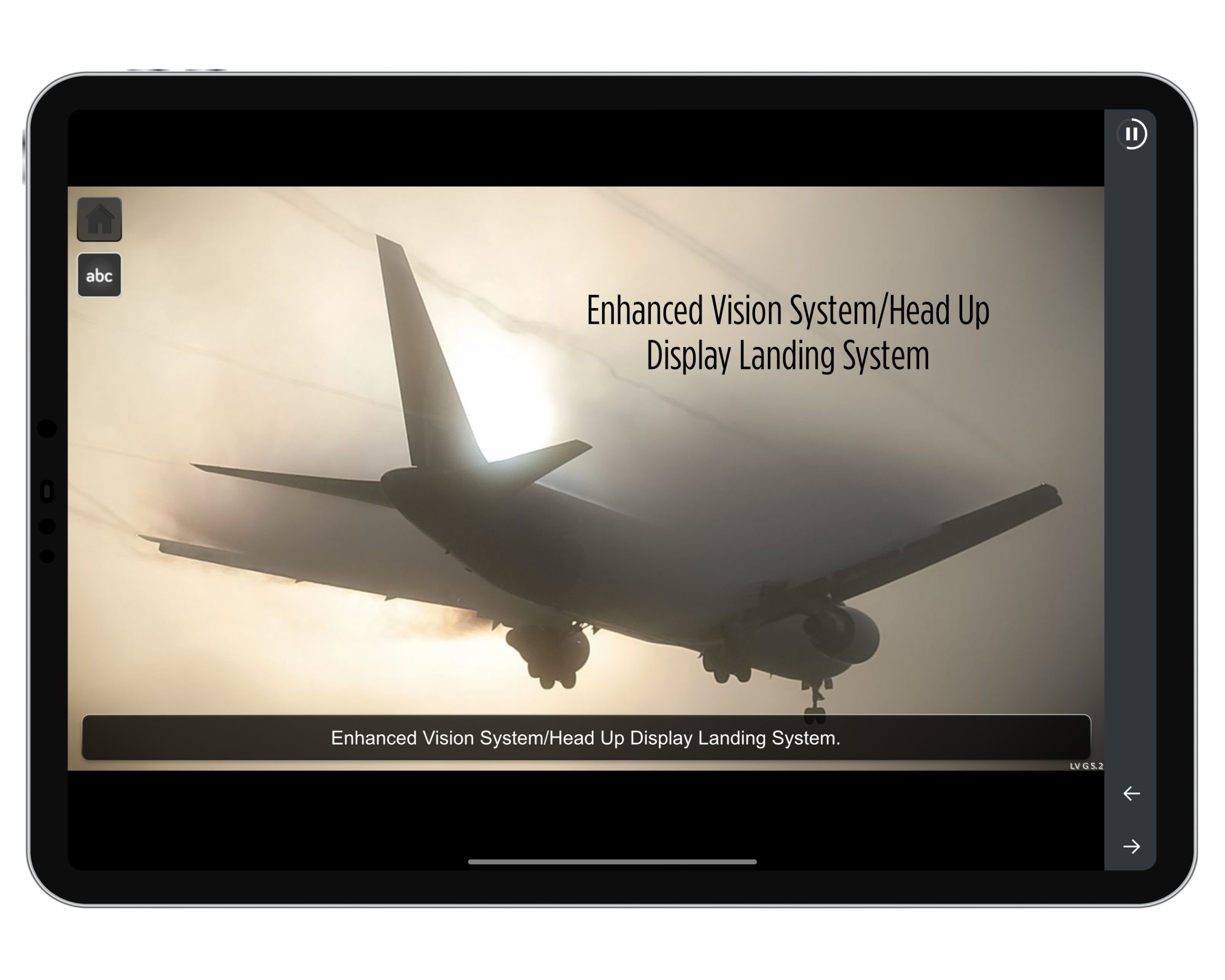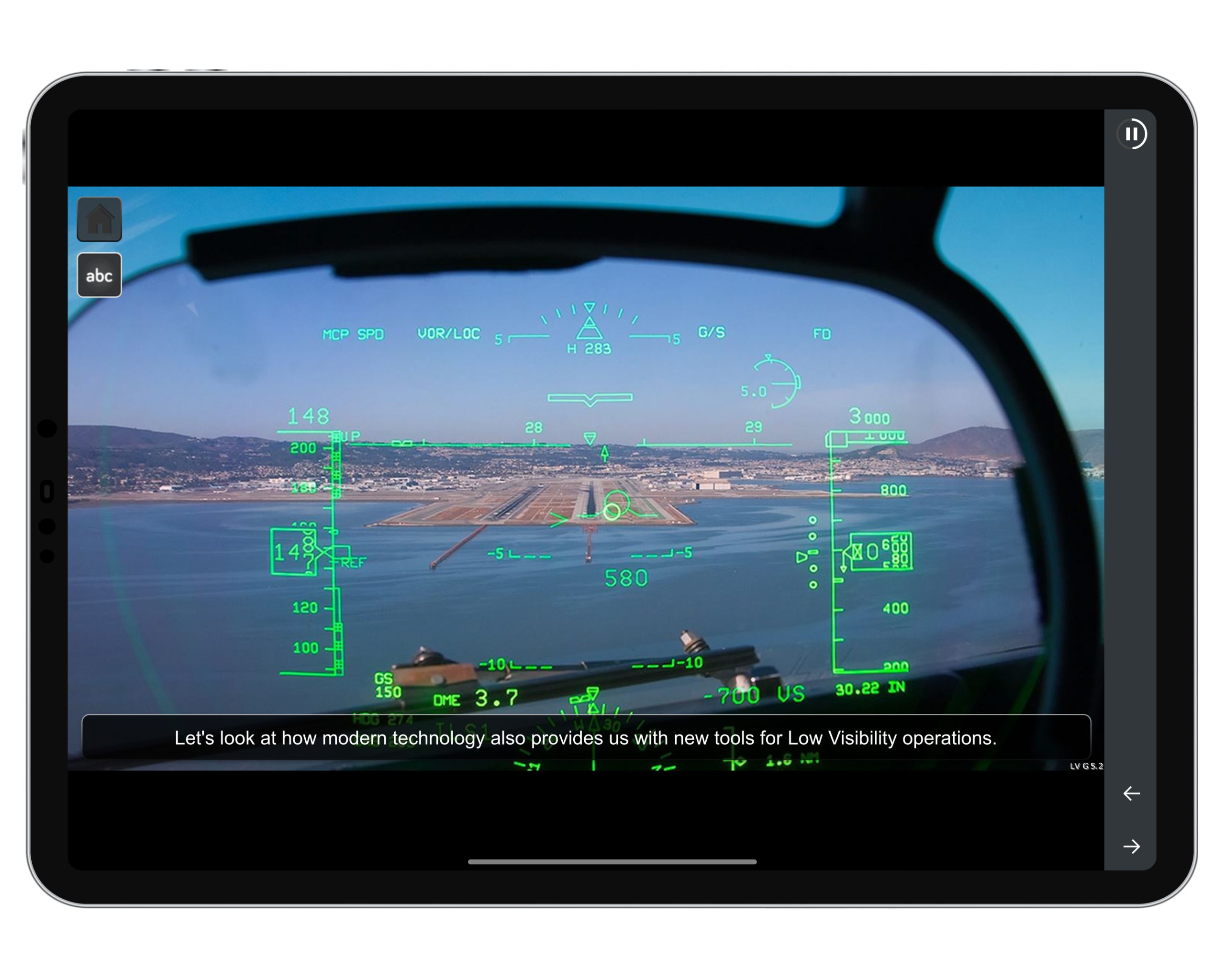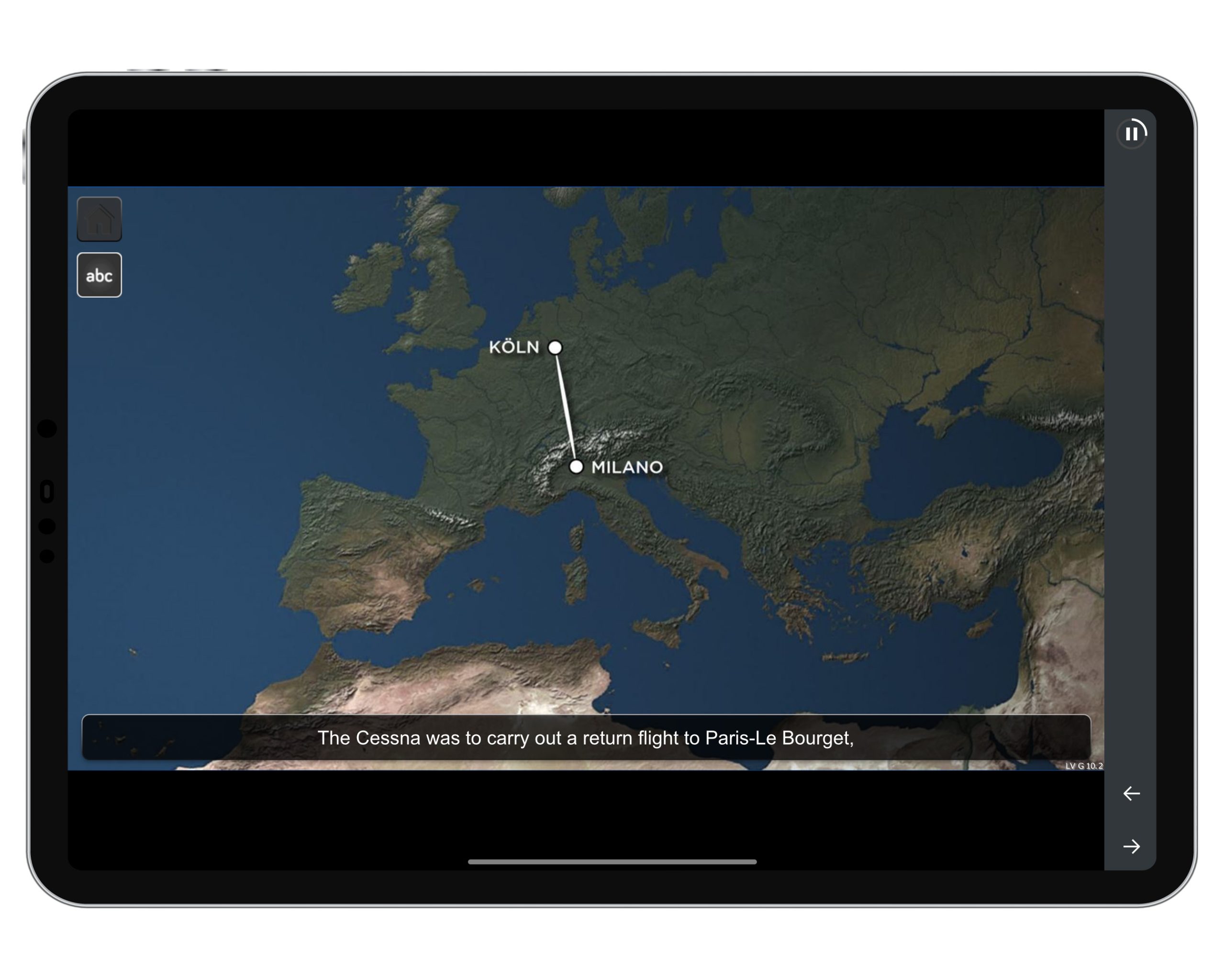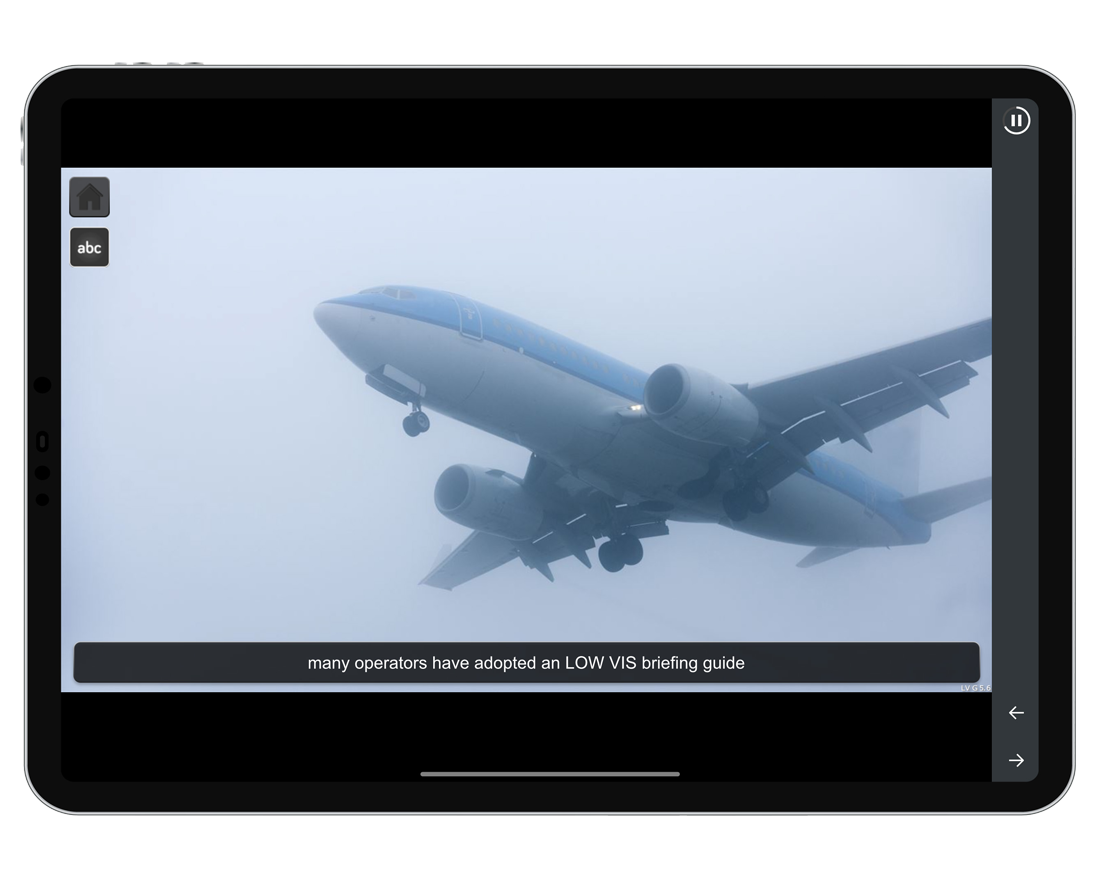Low Visibility Operations
Our Low Visibility Operations course aims to teach pilots and prepare them to operate an aircraft in conditions with low visibility. The course starts with definitions of terms related to low visibility take-off, approach and landing, and ends with a practical part that takes the pilot through a flight in low visibility conditions including pre-flight planning, flight deck preparation in the cockpit, taxi, take-off, cruise, approach, go-around, landing and taxi-in. The examples include approach charts.

DURATION
~ 35 minutes
INTENDED FOR
Flight Crew
Flight Instructors
REGULATORY COMPLIANCE
ICAO, ECAC, AMC1
Learning Objectives
Basic concepts of low visibility flight operations
Low visibility criteria and procedures for taxi and takeoff






